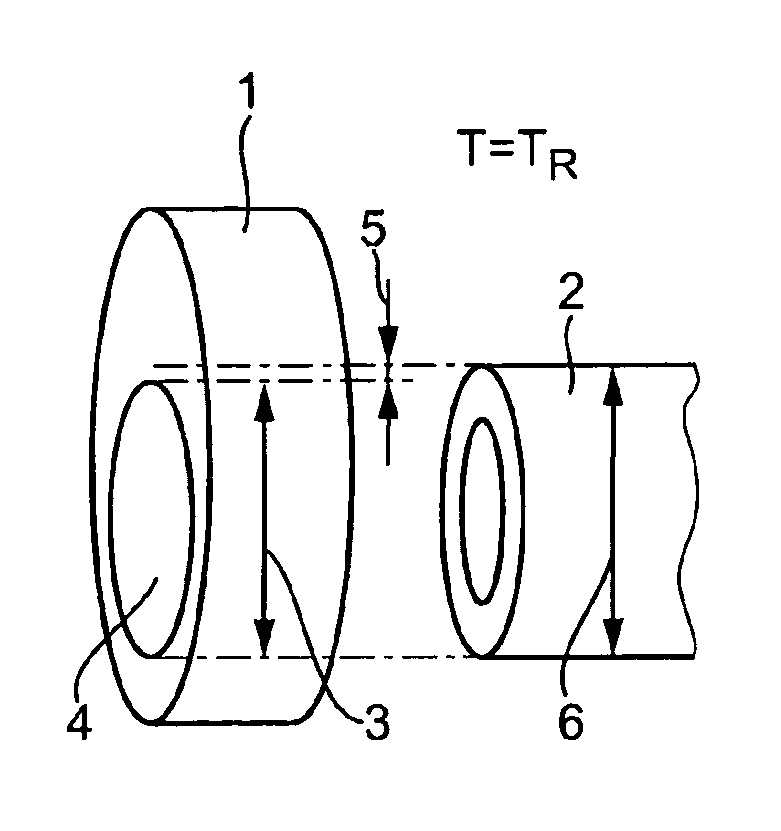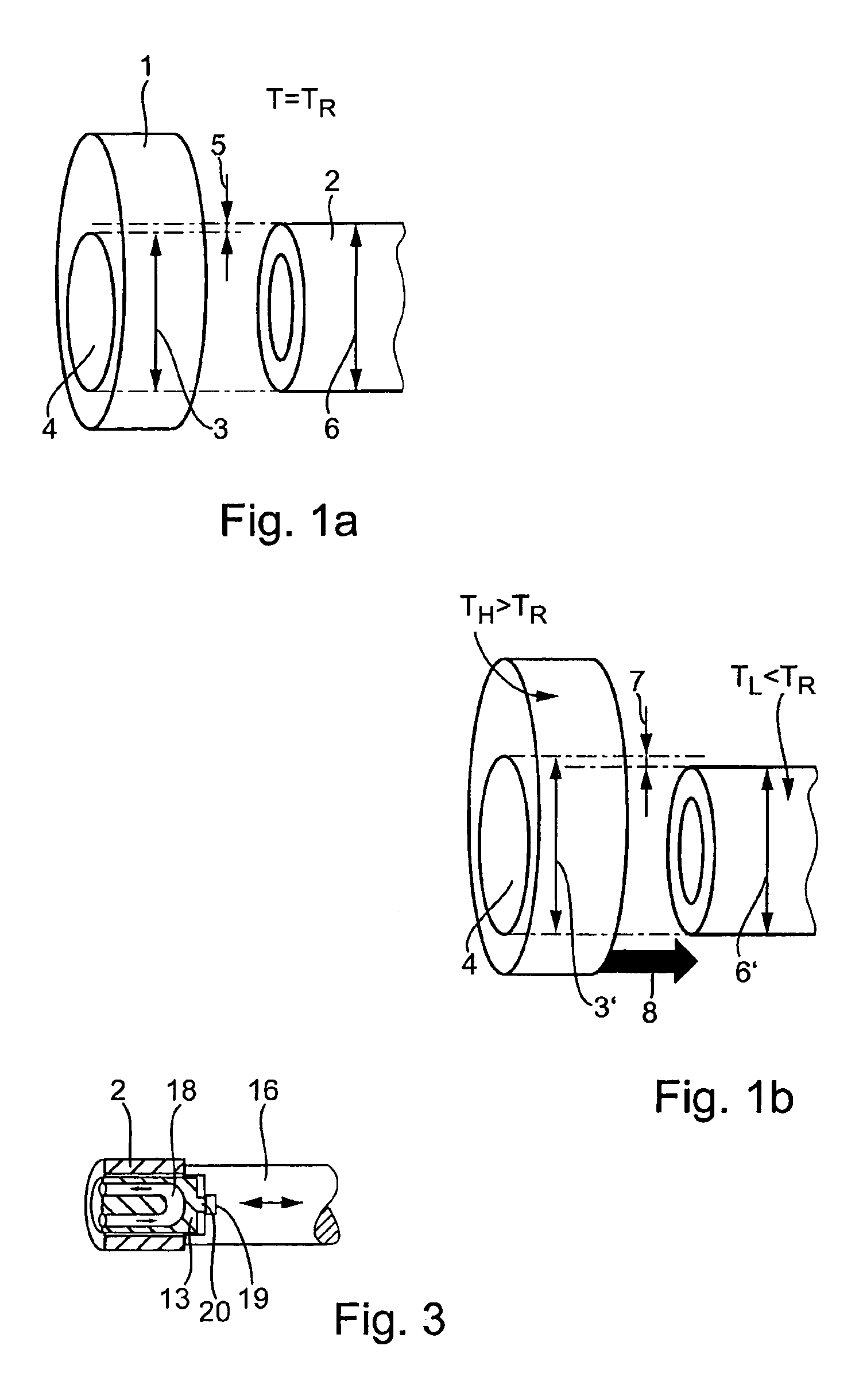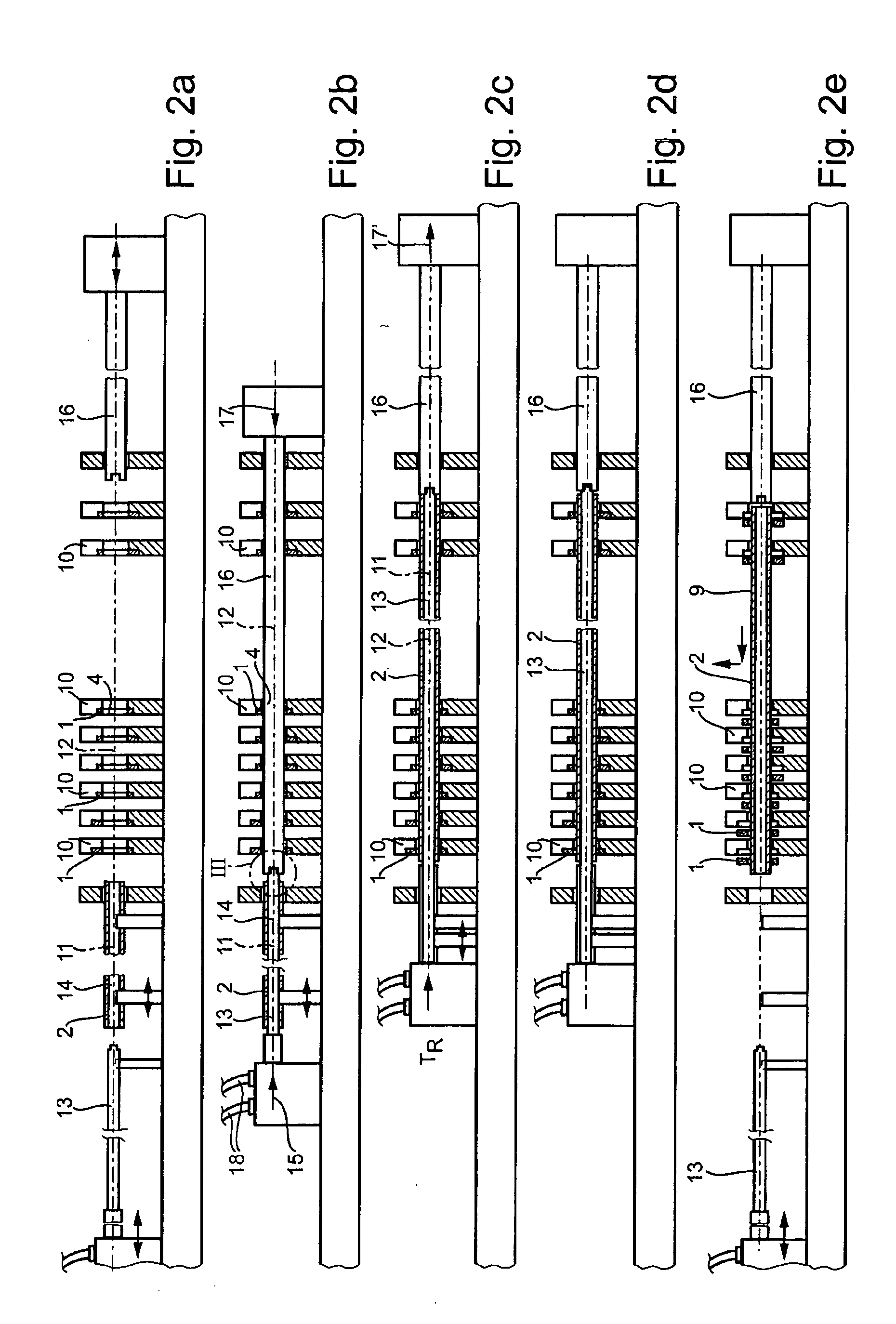Method and assembly system for manufacturing an assembled camshaft
- Summary
- Abstract
- Description
- Claims
- Application Information
AI Technical Summary
Benefits of technology
Problems solved by technology
Method used
Image
Examples
Embodiment Construction
[0028]FIG. 1 shows a schematic representation of a hardened cam 1 which is to be shrunk onto a hollow shaft 2. In order to ensure a firm hold of cam 1 on hollow shaft 2, internal diameter 3 of cam opening 4 at room temperature TR is smaller then external diameter 6 of shaft 2 by what is called a “bite”5. If shaft 2 is cooled down to a temperature TLR, its external diameter is reduced to a value 6′; if cam 1 is heated to a temperature TH>TR, internal diameter 3′ of cam opening 4 increases with the effect that internal diameter 3′ of cam opening 4 is larger than external diameter 6′ of shaft 2 by what is called a “joint clearance”7 so that heated cam 1 may be slid onto cooled shaft 2 (arrow 8 in FIG. 1b). During cooling down of cam 1 and heating of shaft 2, cam 1 is shrunk onto shaft 2 along with the temperature equalization, “bite”5 preventing cam 1 from slipping on shaft 2.
[0029]FIGS. 2a through 2e show a schematic representation of the process steps involved in carrying out the sh...
PUM
| Property | Measurement | Unit |
|---|---|---|
| Temperature | aaaaa | aaaaa |
| Temperature | aaaaa | aaaaa |
| Temperature | aaaaa | aaaaa |
Abstract
Description
Claims
Application Information
 Login to View More
Login to View More - R&D
- Intellectual Property
- Life Sciences
- Materials
- Tech Scout
- Unparalleled Data Quality
- Higher Quality Content
- 60% Fewer Hallucinations
Browse by: Latest US Patents, China's latest patents, Technical Efficacy Thesaurus, Application Domain, Technology Topic, Popular Technical Reports.
© 2025 PatSnap. All rights reserved.Legal|Privacy policy|Modern Slavery Act Transparency Statement|Sitemap|About US| Contact US: help@patsnap.com



